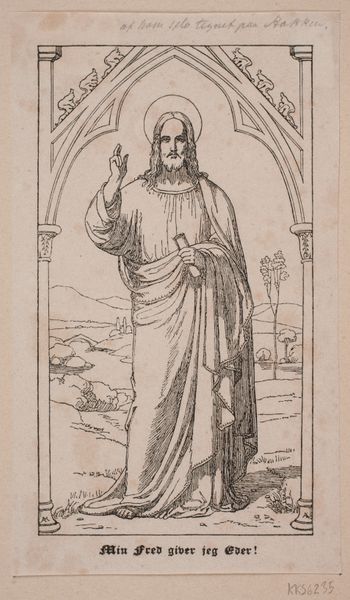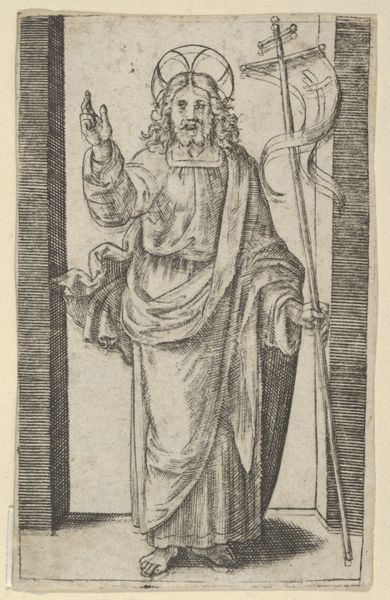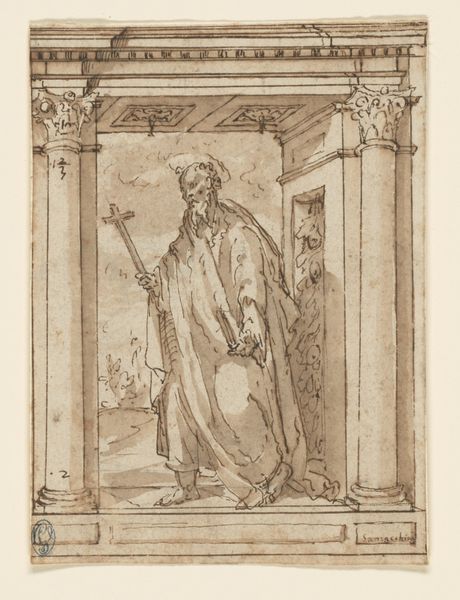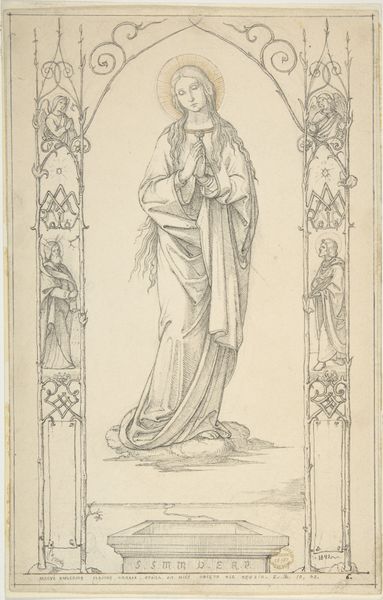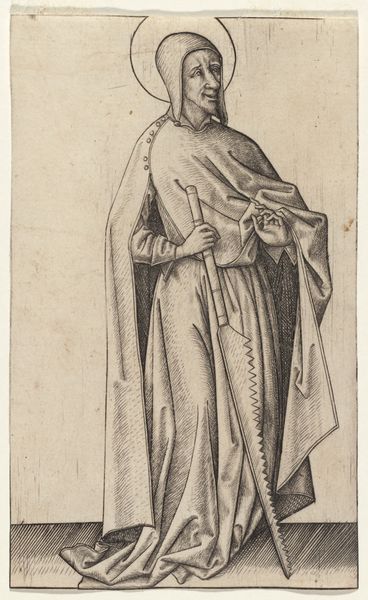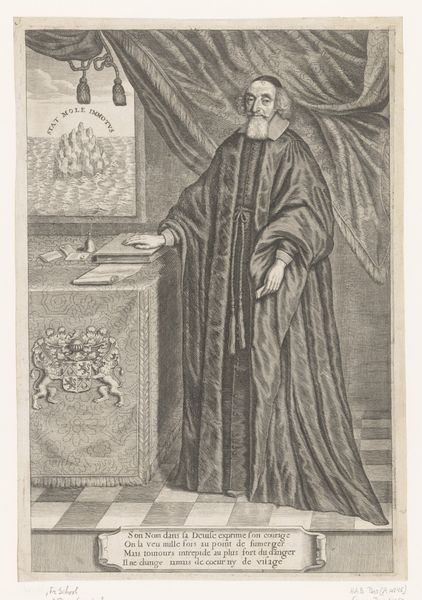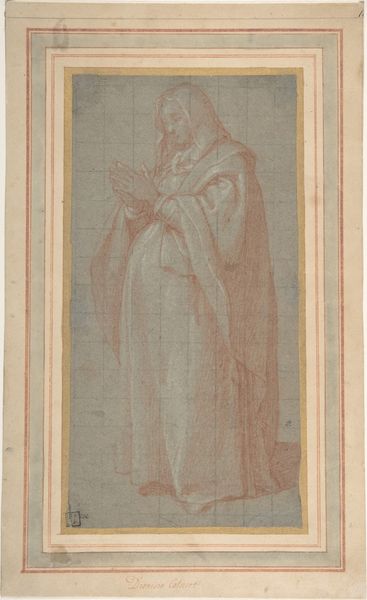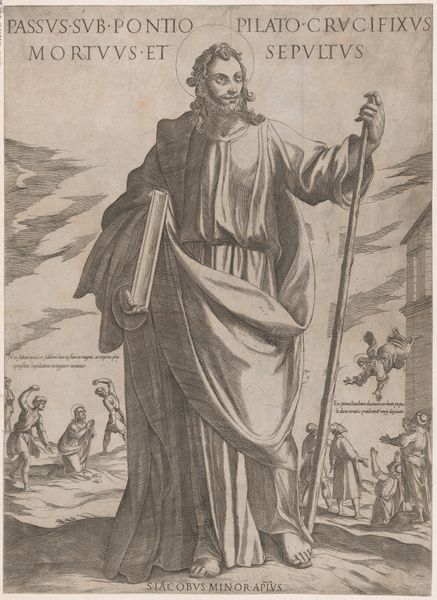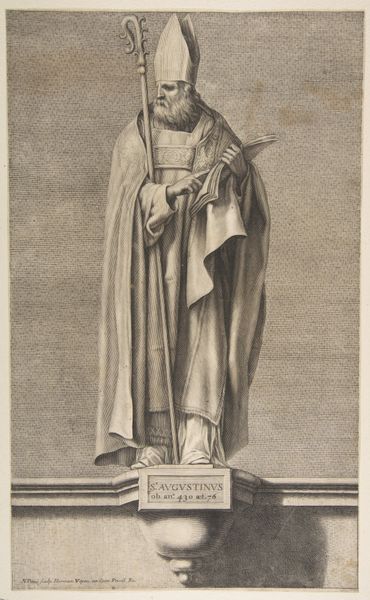
drawing, print, woodcut
#
drawing
# print
#
woodcut
#
history-painting
Dimensions: 138 mm (height) x 80 mm (width) (bladmaal)
Curator: This woodcut, titled "Kristus velsignende", which translates to "Christ Blessing," was created around 1840 by Axel Theodor Kittendorff. It's currently held at the SMK, the National Gallery of Denmark. Editor: It's quite striking. There's a calmness to it, almost ethereal. The monochromatic lines are crisp, yet there's a softness in the rendering of Christ’s features and garments. Curator: Kittendorff worked within a period that saw religious art being both critiqued and revitalized. Prints and drawings like these circulated widely, influencing popular conceptions and devotion. They became important, public markers. Editor: The blessing gesture is clearly a potent symbol— a universal sign of benediction. And he carries what seems to be a scroll, implying scripture, tradition and divine knowledge. It reminds one of the endless iconography surrounding this imagery. The arch too suggests institutional authority and timelessness. Curator: Yes, and I think it's important to also look at who consumes these types of images, and their social environments at the time. This could represent the period's cultural movement for spiritual revival amongst common people, that used art to give shape to complex political feelings. Editor: Precisely. Even the backdrop lends itself to the narrative— a tranquil landscape symbolizing hope and promised lands. There’s an implicit invitation into an eternal narrative, it presents Christ as not just a historical figure, but a perennial presence. Curator: It is interesting that the figure of Christ stands in the foreground with this generic looking scenery in the background, which invites further consideration as to how audiences from various societal status positions, or geographical backgrounds receive or identify with it. Editor: Absolutely, art becomes an access point, to spiritual narratives, personal reflections, or the visual memory that comes before our own time. Curator: Examining art through this lens allows us to gain more insights of the values, ideas, or biases prevalent during Kittendorff’s time. Editor: It serves to understand how those sentiments have either evolved or remained deeply embedded within our collective consciousness through iconic symbolism. Thank you.
Comments
No comments
Be the first to comment and join the conversation on the ultimate creative platform.
